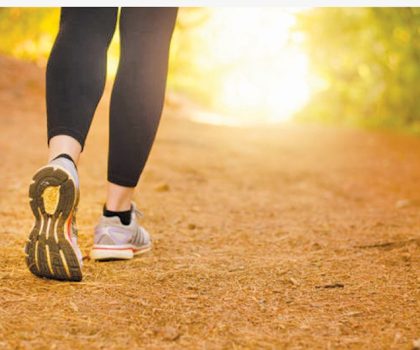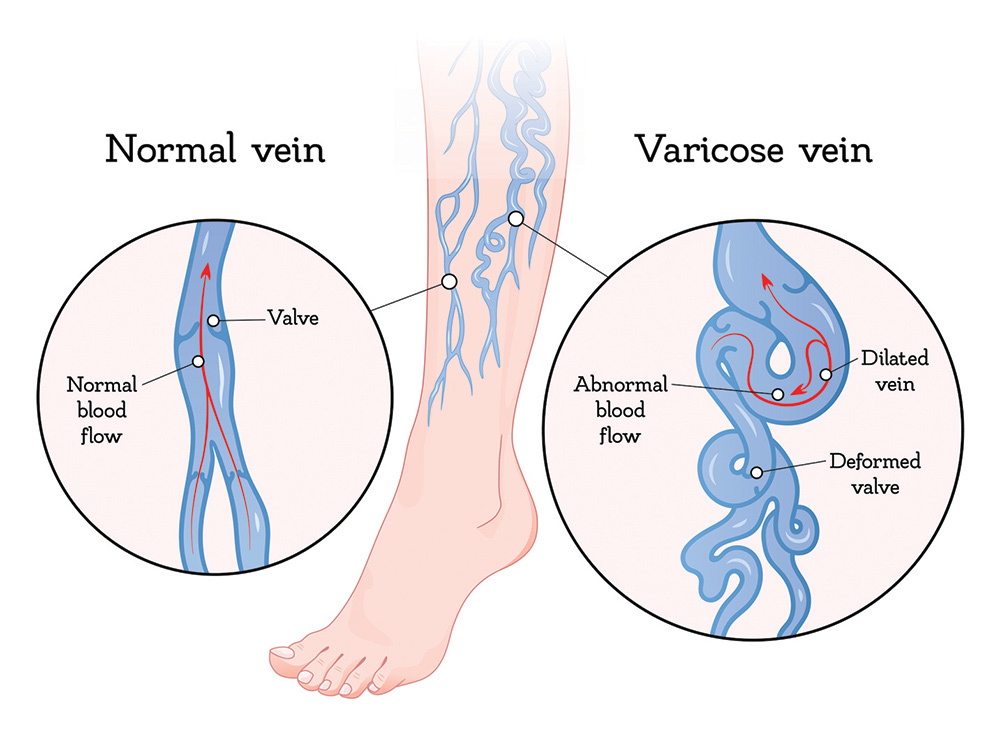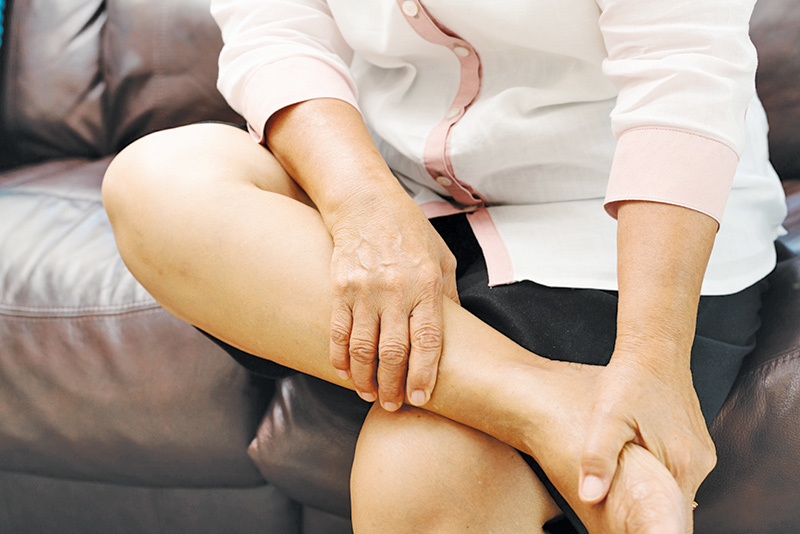Improving you venous health

By Mimi Vanderhaven
According to Dr. Sonja Stiller, founder of Mentor’s Center for Advanced Vein Care, the past 12 months have been disastrous for our overall health—well beyond the Covid-19 pandemic itself.
“There have been huge changes in our social lives,” she explains. “Being stuck at home and away from other people, we have spent far less time moving, that is—walking. Prior to the pandemic, we’d walk to our cars, to the mall, down the long halls of our offices, up and down the stairs of schools and theaters. We’d walk amusement parks, beaches and tourist towns, and even go to the gym. But in 2020, all that stopped. And it shows.”
As a result of reduced activity, more and more people are suffering from symptoms of varicose veins, including leg pain, swelling, fatigue, numbness, tingling, and changes to the skin, all of which can lead to more serious problems—including ulcers and blood clots.

“Taking Out the Trash”
Unlike arteries, which carry nutrition and oxygen from the heart to our cells, our veins carry away waste from the metabolic process. In other words—as Dr. Stiller likes to say—our veins “take out the trash.” And because of gravity, this trash tends to accumulate in our lower legs.
“If these toxins are allowed to build up in our legs, it can lead to leg pain, fatigue, inflammation and a host of other problems,” she says. “And if it spreads to surrounding tissue, it can create a scaly rash and lymphorrhea, or ulcers and sores that won’t heal.”
One of the best ways to maintain good venous health and prevent the build-up of toxins is simply to walk.
“Many people don’t realize it, but the calf muscle is responsible for pumping blood up and out of the lower leg,” Dr. Stiller explains. “That’s why we call it ‘the second heart.’ By walking and doing toe raises, we help build strong calf muscles. Yes, our practice specializes in leading-edge varicose vein treatments, but we also take a more holistic approach. We always speak with patients about nutrition and exercise. The initial goal is 5,000 steps a day. If you can get there—no matter how slowly—you’re going to feel a lot better.”
To explain the relationship between the calf muscle and varicose veins, Dr. Stiller uses the analogy of a creek. “In a straight, free-flowing creek, debris can easily flow down and away, but if the creek is winding and twisty, pools of stagnate water can form and debris can get caught in the turns of the creek. A strong calf muscle means a stronger water flow which can help move the debris along.”

How Are Your Legs Feeling?
Dr. Stiller’s advice is simple: sit back and think about how your legs are feeling.
“Sometimes we’re so busy taking care of others that we don’t pay attention to ourselves,” she adds. “Think about your legs. Are they tired, achy, tingly, swollen? Do you feel relief when you can finally put your feet up at the end of the day? Have you noticed spider veins, a rash, eczema or changes in skin color? Any of these symptoms can indicate a bigger problem underneath.”
Some 40 million people in the U.S. have varicose veins, including half of the population aged 50 and over. “Family history is also a good predictor,” Dr. Stiller says. “Research suggests that almost half of people with varicose veins have a family history of venous disease, but I think it’s higher than that because many parents don’t disclose it to their children and wear stockings and pants to hide the symptoms. If both of your parents have varicose veins, you’re looking at a 90% chance you will, too.”
Weight is also a factor. “If you have a Body Mass Index (BMI) greater than 30, you’re three times more likely to develop the disease,” Dr. Stiller says. “A high BMI also leads to poor outcomes for Covid-19 patients. Blood clots are a major cause of Covid deaths, and people with varicose veins have a greater chance of developing blood clots.”
Don’t Be Embarrassed
If you have venous disease, you are not alone. “No matter how mild or severe your symptoms, please don’t be embarrassed,” Dr. Stiller says. “I’ve seen too many patients who waited to receive treatment because they tried to hide their symptoms. Having varicose veins is not simply a cosmetic issue. It can lead to serious health problems and dramatically affect your quality of life. Even if you already have ulcers and are undergoing wound care without success, we can help resolve the underlying problem. Seventy-percent of people with sores on their legs have a venous health issue—and many don’t know it.”
Center for Advanced Vein Care utilizes today’s leading-edge treatments for varicose veins. “We eliminate the twisty, turny veins and reduce the chance of blood clots,” Dr. Stiller says. “In addition—just like that curvy creek—we improve the flow of your venous system and help move those toxins out of your lower legs and out of your body. The result is less pain, less fatigue and more energy.”
If you have a family history of venous disease and/or if you are experiencing any of the following symptoms, it’s a good idea to get checked out now:
• chronic leg pain
• fatigue
• itching
• burning
• Restless Leg Syndrome
• leg cramps or swelling
• inflammation
• changes in skin color
Dr. Sonja Stiller is a diplomat of both the American Board of Emergency Medicine and the American Board of Venous and Lymphatic Medicine. She is the founder of the Center for Advanced Vein Care, a Tier 1 provider with Lake Health Hospital System, located at 7200 Mentor Avenue, in Mentor. For an appointment, call 440-710-1140. More information can be found at YourHealthyVeins.com.
